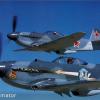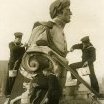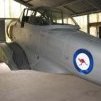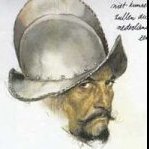MORE HANDBOOKS ARE ON THEIR WAY! We will let you know when they get here.
×
-
Posts
710 -
Joined
-
Last visited
Reputation Activity
-
 aviaamator got a reaction from Jorge Diaz O in La Jacinthe 1825 by aviaamator - 1:20 - schooner
aviaamator got a reaction from Jorge Diaz O in La Jacinthe 1825 by aviaamator - 1:20 - schooner
The end of the process. If you have any questions about this, I will be happy to help!
-
 aviaamator got a reaction from Ondras71 in La Jacinthe 1825 by aviaamator - 1:20 - schooner
aviaamator got a reaction from Ondras71 in La Jacinthe 1825 by aviaamator - 1:20 - schooner
Thank You!!! So it turns out in life, in the morning the ships in the evening the aircraft... The dialectic of life!
-
 aviaamator got a reaction from PeteB in La Jacinthe 1825 by aviaamator - 1:20 - schooner
aviaamator got a reaction from PeteB in La Jacinthe 1825 by aviaamator - 1:20 - schooner
The end of the process. If you have any questions about this, I will be happy to help!
-
 aviaamator got a reaction from Valeriy V in La Jacinthe 1825 by aviaamator - 1:20 - schooner
aviaamator got a reaction from Valeriy V in La Jacinthe 1825 by aviaamator - 1:20 - schooner
In the manufacture of stay , I used a thick needle and a medical needle. The whole process in the photo. To be honest, this work is very exciting! Does anyone else do the same?
-
 aviaamator got a reaction from BETAQDAVE in La Créole 1827 by archjofo - Scale 1/48 - French corvette
aviaamator got a reaction from BETAQDAVE in La Créole 1827 by archjofo - Scale 1/48 - French corvette
Johann! Super!!!
-
 aviaamator got a reaction from KORTES in La Jacinthe 1825 by aviaamator - 1:20 - schooner
aviaamator got a reaction from KORTES in La Jacinthe 1825 by aviaamator - 1:20 - schooner
Thank You!!! So it turns out in life, in the morning the ships in the evening the aircraft... The dialectic of life!
-
 aviaamator got a reaction from tadheus in La Jacinthe 1825 by aviaamator - 1:20 - schooner
aviaamator got a reaction from tadheus in La Jacinthe 1825 by aviaamator - 1:20 - schooner
Thank You!!! So it turns out in life, in the morning the ships in the evening the aircraft... The dialectic of life!
-
 aviaamator reacted to JerseyCity Frankie in question about sail position
aviaamator reacted to JerseyCity Frankie in question about sail position
The lower yards are called the Course Yards and they are more or less fixed in position and always remain at the same height above the deck regardless of sails on them being set or furled. The yards ABOVE the Course Yards are nearly always “Hoisting Yards” meaning they are hoisted up (using hailyards) when sail is set on them and then lowered down again when sails are furled. (Split topsails and split tagalents partially break this rule). The upper and lower positions the hoisting Yards can occupie are more or less determined by the masts they are attached to via their Parrels: the yards are hauled up as high as possible and lowered down as far as possible.
A shocking number of ship model builders don’t understand this and one often sees models with furled sails with all the yards hoisted high into their upper positions, a condition they wouldn’t ever realy be in on actual ships. Some model builders build their ships “bare polled” but position the yards high. There is ample room to debate this practice.
Another trap to fall into is misunderstanding the Lifts on hoisting Yards. Many smaller spar upper yards have lifts that don’t run, they are fixed lengths of line that can not be adjusted from the deck, they are only tight when the yards are in their lower positions and when the yards are hoisted up, the lifts droop dramatically. (Topsail Yards however have lifts that do run) Many model builders don’t understand these lifts and depict them as being tight with the yard hoisted.
-
 aviaamator reacted to wefalck in question about sail position
aviaamator reacted to wefalck in question about sail position
On the picture, the two lower sails are 'clewed up'. This is done in order to take the wind out of the sails, e.g. to slow the ship down. 'Furling' means that the sails are hauled up onto the yards and securely stowed there. It would be a lot of writing to describe the respective procedures and what part of the rigging would be involved. You may want to consult books such as Harland's 'Seamanship' for this.
Most sails could be clewed up in one way or another. Sometimes the very light top-sails could only be lowered to be furled. On your type of ship I would expect all sails to be fitted with clew-lines, which are the ones that run from the lower corners of the sails to a point on the yard near its centre.
-
 aviaamator reacted to michael mott in La Jacinthe 1825 by aviaamator - 1:20 - schooner
aviaamator reacted to michael mott in La Jacinthe 1825 by aviaamator - 1:20 - schooner
A very nice splice.
Michael
-
 aviaamator reacted to archjofo in La Créole 1827 by archjofo - Scale 1/48 - French corvette
aviaamator reacted to archjofo in La Créole 1827 by archjofo - Scale 1/48 - French corvette
Hello,
thanks for the positive comments
and the reference to a source of linen yarn.
@Ferit KUTLU
The ropes for the bouys are clothed. Therefore, I will leave this.
But the other ropes will be replaced.
-
 aviaamator got a reaction from mtaylor in La Créole 1827 by archjofo - Scale 1/48 - French corvette
aviaamator got a reaction from mtaylor in La Créole 1827 by archjofo - Scale 1/48 - French corvette
Johann! Super!!!
-
 aviaamator reacted to Gaetan Bordeleau in Beavers Prize 1777 by Mike Y - 1:48 - POF - Hahn style
aviaamator reacted to Gaetan Bordeleau in Beavers Prize 1777 by Mike Y - 1:48 - POF - Hahn style
Hi Mike,
I guess yo could say that the standard shape looks like the second one.
I have metal ones exactly the same, I think it was from Lee Valley.
Also I have boxwood ones similar and I broke 1 in 20 years.
-
 aviaamator reacted to Mike Y in Beavers Prize 1777 by Mike Y - 1:48 - POF - Hahn style
aviaamator reacted to Mike Y in Beavers Prize 1777 by Mike Y - 1:48 - POF - Hahn style
Assembly phase is very relaxing and could be easily combined with a nice music and some fine tea. No dust, no noise - perfect evening!
Experimenting with finishes. I had few extra clamps as a reserve for whoopsies, ending up with no whoopsies - so using them to test the finishes.
So far they all look the same when applied, but a pretty different characteristics during an application process. Will see how they look once dry.
Result of the weekend:
Now they just need some final shaping, handles, sanding and finishing.
-
 aviaamator reacted to Mike Y in Beavers Prize 1777 by Mike Y - 1:48 - POF - Hahn style
aviaamator reacted to Mike Y in Beavers Prize 1777 by Mike Y - 1:48 - POF - Hahn style
Some finish would be nice - will show that bookmatched cherry grain and protect from fingerprints. It is a tool that supposed to be touched
Was thinking about cork, but all the cork sheets I saw were out of scale for those tiny clamps. It really feels like making a scale model of a real thing.
-
 aviaamator reacted to druxey in Beavers Prize 1777 by Mike Y - 1:48 - POF - Hahn style
aviaamator reacted to druxey in Beavers Prize 1777 by Mike Y - 1:48 - POF - Hahn style
Nice work, Mike. But do the parts need any finish at all? Some clamps have the jaws lined with thin cork sheet.
-
 aviaamator reacted to Mike Y in Beavers Prize 1777 by Mike Y - 1:48 - POF - Hahn style
aviaamator reacted to Mike Y in Beavers Prize 1777 by Mike Y - 1:48 - POF - Hahn style
Sanding sealer test results are quite surprising. On cherry, there is no visible difference between any of them and Danish Oil (while there is a clear difference on Pear).
However, the surface smoothness is different, especially on endgrain or diagonal grain. Rustins and Liberon are rough and look blotchy on a photo, while Briwax cellulose leaves a smooth and even finish, though a bit too glossy for my taste. Danish oil is slightly less smooth.
Decided to go with oil since I am more used to it, and these clamps are tricky to finish (a lot of surfaces, narrow areas between the metal rods, and I do not want the finish to cause any buildup where the metal cylinders go).
From left to right: Liberon, Rustins, Briwax, Danish Oil:
Each clamp got a nice chamfers on all edges, primarily with a block plane and a file on a crossgrain:
Half of the regular shorter clamps got that narrow tips. Simple radius looks good enough:
Drum sander leaves marks on cherry, so it needs some satisfying sanding time to make it smooth and beautiful:
So all short clamps are waiting for their turn to have their sides sanded. It is tedious, and brass particles get stuck in a wood, requiting some scraping afterwards to remove them. Hope it would be less of a problem for cherry.
While the longer clamps are ready, and just need to get their handles (which requires to mix a batch of epoxy, so I will do it later for all clamps in the same batch):
-
 aviaamator reacted to cog in La Créole 1827 by archjofo - Scale 1/48 - French corvette
aviaamator reacted to cog in La Créole 1827 by archjofo - Scale 1/48 - French corvette
Not so modest Johann. If the fabric underneath would have looked like something more in scale, it could have been the real deal ... very convincing result
Cheers
-
 aviaamator reacted to archjofo in La Créole 1827 by archjofo - Scale 1/48 - French corvette
aviaamator reacted to archjofo in La Créole 1827 by archjofo - Scale 1/48 - French corvette
Hello Mark,
thanks for the tip.
I practice a lot, here are my modest results.
-
 aviaamator got a reaction from Ondras71 in La Jacinthe 1825 by aviaamator - 1:20 - schooner
aviaamator got a reaction from Ondras71 in La Jacinthe 1825 by aviaamator - 1:20 - schooner
In the manufacture of stay , I used a thick needle and a medical needle. The whole process in the photo. To be honest, this work is very exciting! Does anyone else do the same?
-
 aviaamator got a reaction from KORTES in La Jacinthe 1825 by aviaamator - 1:20 - schooner
aviaamator got a reaction from KORTES in La Jacinthe 1825 by aviaamator - 1:20 - schooner
The end of the process. If you have any questions about this, I will be happy to help!
-
 aviaamator got a reaction from JpR62 in La Jacinthe 1825 by aviaamator - 1:20 - schooner
aviaamator got a reaction from JpR62 in La Jacinthe 1825 by aviaamator - 1:20 - schooner
The end of the process. If you have any questions about this, I will be happy to help!
-
 aviaamator reacted to archjofo in La Jacinthe 1825 by aviaamator - 1:20 - schooner
aviaamator reacted to archjofo in La Jacinthe 1825 by aviaamator - 1:20 - schooner
Fantastic work!
I'm excited
-
 aviaamator got a reaction from KORTES in La Jacinthe 1825 by aviaamator - 1:20 - schooner
aviaamator got a reaction from KORTES in La Jacinthe 1825 by aviaamator - 1:20 - schooner
In the manufacture of stay , I used a thick needle and a medical needle. The whole process in the photo. To be honest, this work is very exciting! Does anyone else do the same?
-
 aviaamator got a reaction from ccoyle in La Jacinthe 1825 by aviaamator - 1:20 - schooner
aviaamator got a reaction from ccoyle in La Jacinthe 1825 by aviaamator - 1:20 - schooner
The end of the process. If you have any questions about this, I will be happy to help!











